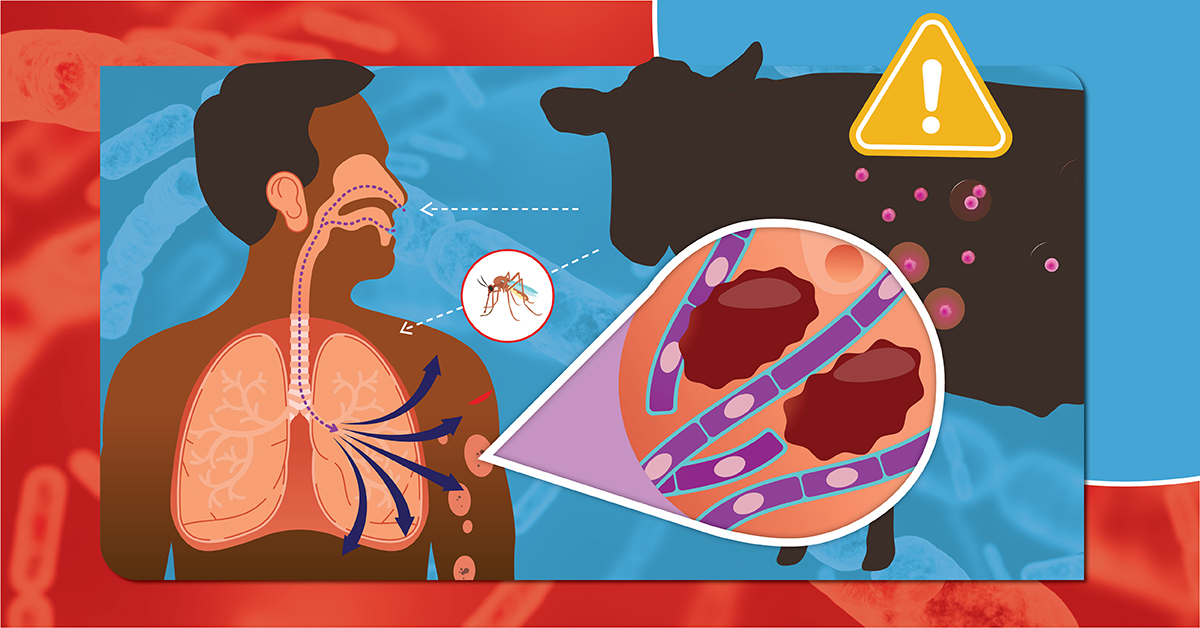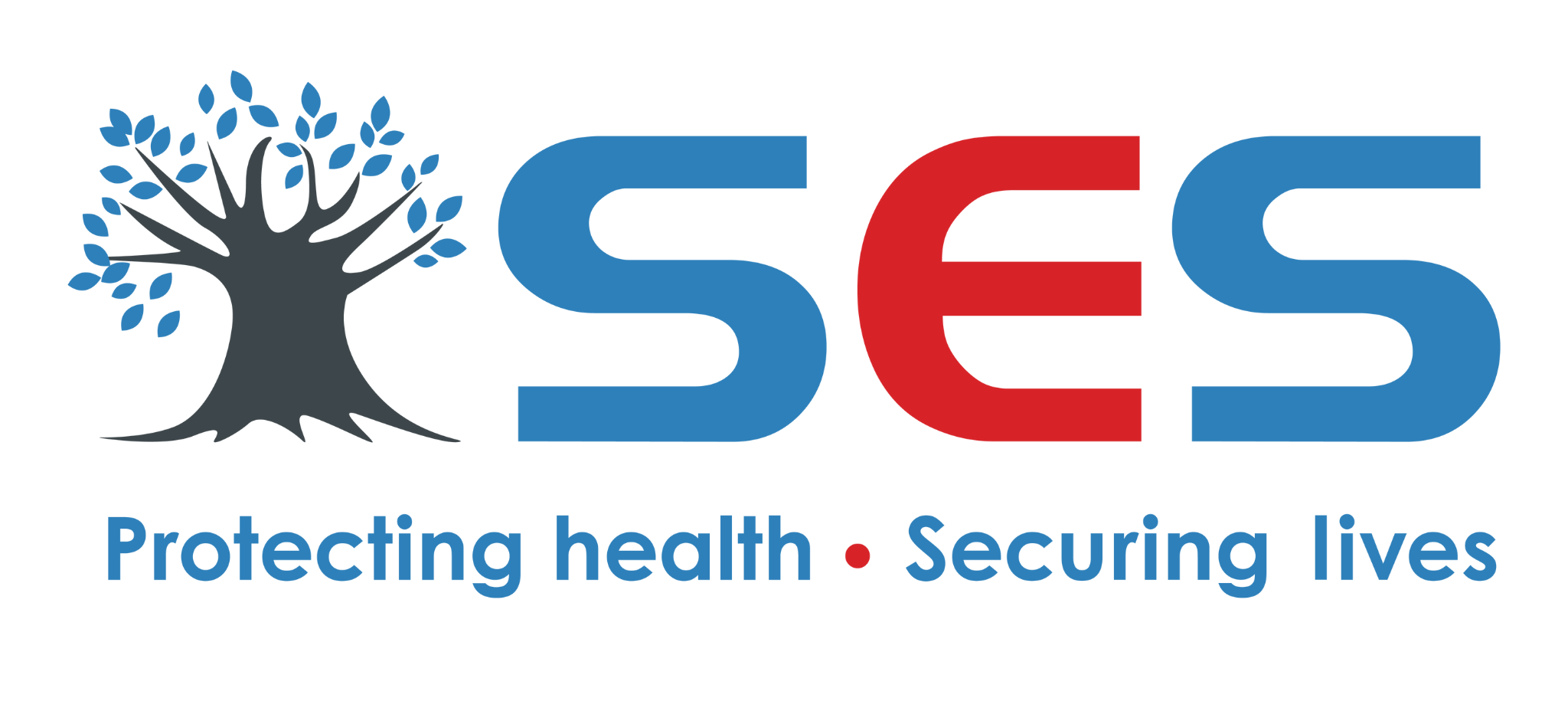Anthrax uncovered:
Understanding, preventing, and responding

Anthrax is a rare but serious infectious disease caused by the bacterium Bacillus anthracis that can affect both humans and animals. This bacterium produces spores that can survive in harsh conditions for extended periods. These spores are the infectious form of the bacteria and can be found in soil and animal products, including wool, hides, and meat.
How Is It Spread?
- Direct Contact: People can get anthrax by touching or handling infected animals, their products, or contaminated soil.
- Inhalation: Inhalation anthrax is contracted by breathing in spores from contaminated animal products or materials.
- Ingestion: Consuming undercooked meat from infected animals can lead to gastrointestinal anthrax.
What are the symptoms?
It’s important to note that anthrax symptoms can appear within a few days of exposure, but the incubation period can vary. Cutaneous anthrax is the most common form and typically has a better prognosis with prompt treatment. Inhalation anthrax is the most severe and has a high fatality rate if not treated early. Gastrointestinal anthrax is relatively rare but can also be serious and requires immediate medical attention.
Cutaneous Anthrax:
- A small, itchy sore that develops into an ulcer with a black center (eschar).
- Swelling around the sore.
- Fever.
- Fatigue.
- Mild headache.
Inhalation Anthrax (Most Severe Form):
- Initial symptoms similar to a common cold, including fever, cough, and mild chest discomfort.
- Progression to severe symptoms, including difficulty breathing, high fever, sweating, confusion, and shock.
- Enlarged lymph nodes in the neck and chest.
- Severe respiratory distress.
Gastrointestinal Anthrax:
- Nausea.
- Vomiting.
- Abdominal pain and discomfort.
- Diarrhea.
- Fever.
What to do if you suspect exposure
If you suspect exposure to anthrax:
- Seek Medical Help: Contact a healthcare professional immediately.
- Report It: Inform local health authorities and your workplace or school if necessary.
- Isolate Yourself: Avoid contact with others to prevent potential transmission.
Where you can get treatment
Prompt treatment is crucial. Seek medical attention at your nearest healthcare facility, clinic, or hospital. Anthrax can be treated with antibiotics and, in severe cases, may require hospitalization.
What to avoid
To reduce the risk of anthrax exposure:
- Avoid Dead Animals: Don’t touch or handle dead or sick animals, especially in areas where anthrax is known to occur.
- Cook Meat Thoroughly: Ensure that all meat is well-cooked to kill any potential anthrax spores.
- Use Protective Gear: If working with animals or animal products, wear protective clothing, including gloves and masks.
Ways in which it is contracted.
- Contact with Infected Animals: Handling or being near infected animals or their products.
- Inhalation: Breathing in anthrax spores from contaminated materials.
- Ingestion: Consuming undercooked meat or products from infected animals.
Remember, while anthrax is rare, awareness and preventive measures are essential. Understanding how it spreads and knowing what to do in case of exposure can help protect you and your community.
For more information and updates, visit your local health department or consult a healthcare professional.
[Disclaimer: This information is for awareness and educational purposes only. Always consult a healthcare professional for accurate and up-to-date information and guidance.]
Credit Ministry of Health and CDC
